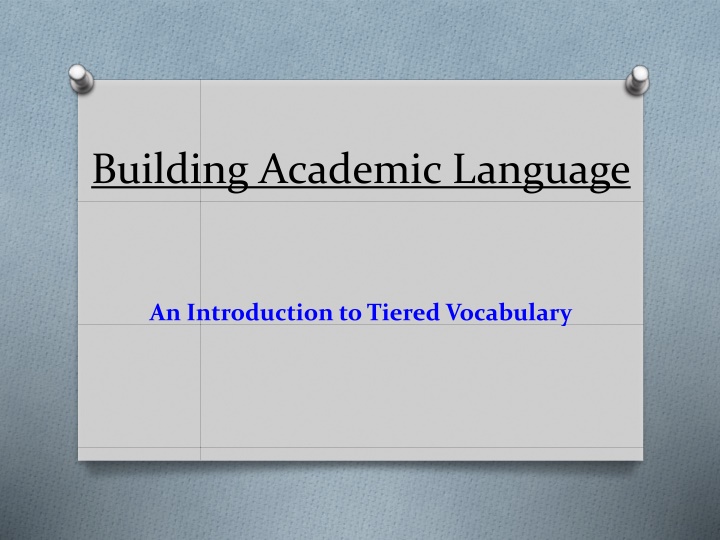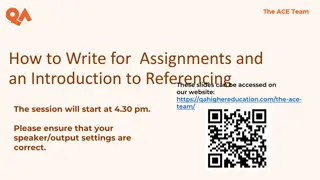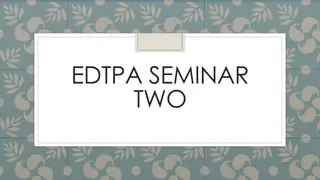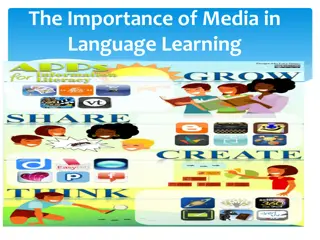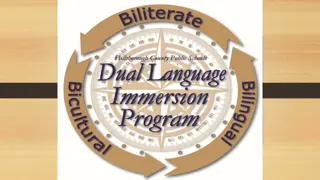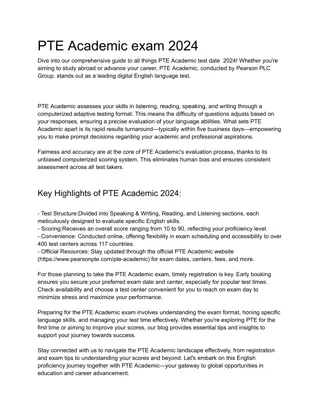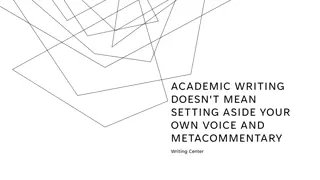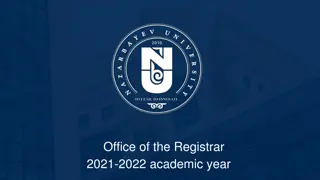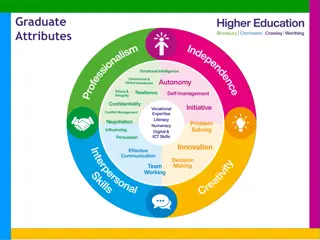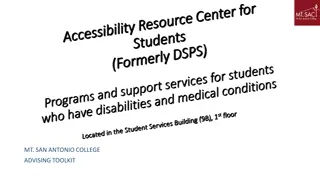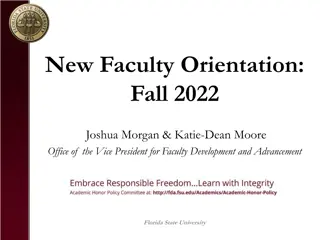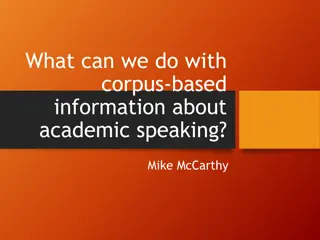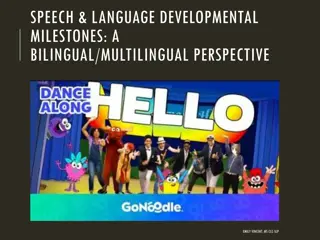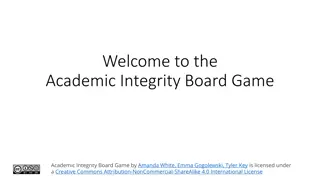Building Academic Language
"This book delves into the importance of tiered vocabulary, providing educators with strategies to enhance students' academic language proficiency. It offers practical guidance on implementing tiered vocabulary instruction to support diverse learners. The content explores various levels of vocabulary acquisition to empower students in their linguistic development within educational settings."
Download Presentation

Please find below an Image/Link to download the presentation.
The content on the website is provided AS IS for your information and personal use only. It may not be sold, licensed, or shared on other websites without obtaining consent from the author.If you encounter any issues during the download, it is possible that the publisher has removed the file from their server.
You are allowed to download the files provided on this website for personal or commercial use, subject to the condition that they are used lawfully. All files are the property of their respective owners.
The content on the website is provided AS IS for your information and personal use only. It may not be sold, licensed, or shared on other websites without obtaining consent from the author.
E N D
Presentation Transcript
Building Academic Language An Introduction to Tiered Vocabulary
Goals Define Academic Language Practice student talk strategies Identify and Pull Out Tiered Vocabulary from text
Academic Language What the research says...
Students development of social, instructional, and academic language, a complex and long-term process, is the foundation for their success in school. Anstrom, et.al. (2010); Francis, Lesaux, Kieffer, & Rivera (2006); Bailey & Butler (2002); Cummins (1979)
Research shows that average students learn approximately 7 words per day (Miller, 1978). At-risk students are learning less than 1-2 words per day or none at all. But there are too many words in the English language to teach! Not all words call for attention. (Beck, 2001)
Informal Language Academic Language repetition of words variety of words, more sophisticated sentences start with and or but sentences start with transition words, such as however , moreover , and in addition use of slang such as whatever and like replaces slang with accurate descriptions appropriate for use in casual, social settings appropriate for use in all academic and work places settings can vary greatly by ethnicity, region, gender, age common language register for all (K. Kinsella, 2007)
Vocabulary & Discourse Old School Drill & Kill List of words & a dictionary Quiz at end of week
Vocabulary & Discourse New School Tiered vocabulary Connections to mentor texts (& CCSS) Interactive practice Language awareness
Identifying Words:Tier 1 Tier 1 words are words most children know in their primary language Frequently used in oral discourse Consist of basic words, connectors, and/or compounds Often demonstrated easily through visuals, motions, or gestures baby, clock, happy, walk, jump, hop, slide, girl, boy, dog, long 12 Beck, I. et al, 2002; Calderon, M. 2011
Identifying Words: Tier 2 Complex words and longer phrases ~ bookishness, all of a sudden Polysemous words (multiple meaning words) ~ plot, table, Idioms ~ kicked the bucket Noun Phrases ~ long time, Great Depression Phrasal Verbs ~break up, break down, break into Prepositional phrases ~ on the verge Source: Calderon, M. 2011
Identifying Words: Tier 2 Connectors and transition words ~ as a result Specific and sophisticated words that cross multiple content areas ~ analysis Previous conceptual understanding builds word knowledge ~ may not know the words sophisticated or elegant but knows the concept and word pretty Source: Calderon, M. 2011
Identifying Words:Tier 3 Low frequency of use Often limited to specific domains Words used infrequently or jargon Often defined in footnote or glossary Best learned when a specific need arises Very important to understanding academic content but generally confined to one subject area ~ isotope, lathe, peninsula, refinery (Beck,I. et al, 2002; Calderon, M. 2011)
Examples of the 3 Tiers Tier 1 Tier 2 Tier 3 Simple, concrete English that can be acted out. Information processing words, polysemous words, transition words, connectors, phrasal verbs, idioms, more sophisticated words useful across subject areas. Uncommon words typically associated with a specific content area. clock happy choice friendly locker avoid, adapt, trunk, data table, consequently, point, once upon a time, break a leg, as well as, make up, make do, make off with, make over entomologist peninsula endoplasmic reticulum
Lets Practice Sorting Tiered Vocabulary 1. Choose an example as a group 2. Read the text at your table 3. Find five examples in each tier and fill in the chart 4. Compare your words and discuss your reasoning. Use the Academic Conversation Moves chart as support.
Were any words both Tier 2 and Tier 3? What was challenging? How might you teach a Tier 2 word you identified? Did you have general consensus on most words?
Academic Talk Strategies/Toolbox Answer Cards Table Talk/Partner Work Academic Conversation Moves Chart Pulling out Tiered Vocabulary Whole Group Debrief: Cold Call, Restate, Synthesize Whole Group Dipstick with Answer Cards/Standing
